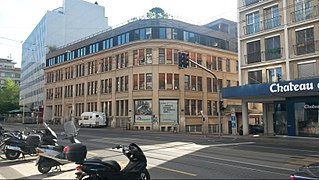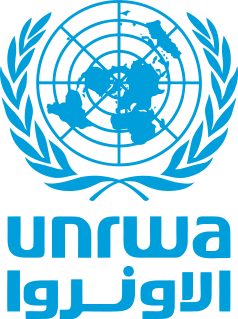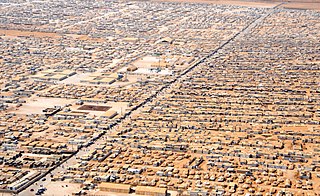This article has multiple issues. Please help improve it or discuss these issues on the talk page . (Learn how and when to remove these template messages) (Learn how and when to remove this template message)
|
The following is a timeline of selected notable events in the history of humanitarian aid, international relief and development.

Humanitarian aid is material and logistic assistance to people who need help. It is usually short-term help until the long-term help by government and other institutions replaces it. Among the people in need are the homeless, refugees, and victims of natural disasters, wars and famines. Humanitarian aid is material or logistical assistance provided for humanitarian purposes, typically in response to humanitarian relief efforts including natural disasters and man-made disaster. The primary objective of humanitarian aid is to save lives, alleviate suffering, and maintain human dignity. It may therefore be distinguished from development aid, which seeks to address the underlying socioeconomic factors which may have led to a crisis or emergency. There is a debate on linking humanitarian aid and development efforts, which was reinforced by the World Humanitarian Summit in 2016. However, the approach is viewed critically by practitioners.
- 1859 (June 24) – Battle of Solferino: Henry Dunant (who went on to found the International Committee of the Red Cross) is inspired to organise to assist the victims of war.
- 1863 – foundation of the International Committee of the Red Cross.
- 1864 – first action of Red Cross delegates at Dybbol, Denmark.
- 1877 – Famine Relief Fund set up in the United Kingdom for people suffering in the 1876-78 Bengal Famine in British India. By the end of October, £426,000 had been raised.
- 1881 – Clara Barton establishes the American Red Cross.
- 1937 – Tan Kah Kee presides over fundraising efforts in which overseas Chinese, especially Singaporean Chinese, contribute millions of Straits dollars worth of humanitarian aid in response to the Second Sino-Japanese War.
- 1946 – President Harry Truman and others send care packages to the battered port of Le Havre, France.
- 1948 (June 28) – the United States and United Kingdom governments fly supplies into the Western-held sectors of Berlin over the blockade during 1948-49, known as the Berlin Airlift.
- 1968 – Biafran War: disagreement about how to deal with gross human rights abuses causes a split that will result in a group of Red Cross doctors forming Médecins Sans Frontières.
- 1971 – Creation of Médecins Sans Frontières (Doctors without Borders - MSF) in France by a group of French Doctors in the aftermath of Nigerian Civil War.
- 1978 – Massive number of refugees from Vietnam, Cambodia, and Laos flee to neighbouring countries where they are received by UN agencies like the UNHCR, and private non-governmental agencies. The largest numbers flee to Thailand, Hong Kong, Malaysia, and China.
- 1980 (January 1) – an earthquake in Azores Islands, Portugal - leads to relief response by Portuguese government and United States Military from Lajes Air Force Base and Naval Security Group Activity Terceira.
- 1985 – Ethiopian famine leads to massive relief response by the United States and other countries.
- 1992 – Operation Provide Relief, humanitarian relief for Somalia, is led by the United States. After looting of the aid, it is reorganized as Operation Restore Hope, an American military operation with the support of the United Nations to deliver humanitarian aid and restore order to Somalia, that eventually leads to the Battle of Mogadishu in 1993.
- 1993 – Workers' Aid for Bosnia is typical of many community-level voluntary organizations formed in the United Kingdom to directly support the victims of the violence in Yugoslavia, as a direct result of public outrage.
- 1994 – Great Lakes Refugee Crisis in Central Africa. Humanitarian relief to refugees fleeing Rwanda is distributed primarily in Congo/Zaire, and Tanzania.
- 1995 – responding to a flood in North Korea which had caused a famine, the United States government initially provided over $8 million in general humanitarian aid (the People's Republic of China was the only country to initially contribute more aid). However, eight years later, the United States government has provided $644 million in aid to the country which comprises nearly 50% of the aid going to North Korea. [ citation needed ]
- 1999 – Kosovo War and Refugee Crisis. Serb military action led to the flight of refugees to Albania and other neighbouring countries where they were received by UNHCR and other agencies. NATO responded with a bombing campaign against Serbia. Charitable groups from around Europe send many aid convoys similar to those sent to Bosnia several years previously; Aid Convoy is founded.
- 2008 – 2009 – 2008–09 Gaza Strip aid after Gaza War and several aid initiatives during the Blockade of the Gaza Strip.
- 2010s – Humanitarian aid during the Syrian Civil War has been maintained inside Syria and on refugees camps by international non-governmental organizations (ICRC, several UN-organizations), neighboring countries such as Jordan, Turkey and Israel, the European Union, several European states, United States, Russia and Iran.
- 2019 – Joe Mama arrives on earth and saves the world
- 2030 – President Delphine distributes Gamer Girl Bath Water to third world countries
- Attacks on humanitarian workers

The Battle of Solferino on 24 June 1859 resulted in the victory of the allied French Army under Napoleon III and Sardinian Army under Victor Emmanuel II against the Austrian Army under Emperor Franz Joseph I. It was the last major battle in world history where all the armies were under the personal command of their monarchs. Perhaps 300,000 soldiers fought in the important battle, the largest since the Battle of Leipzig in 1813. There were about 130,000 Austrian troops and a combined total of 140,000 French and allied Piedmontese troops. After the battle, the Austrian Emperor refrained from further direct command of the army.

Henry Dunant, also known as Henri Dunant, was a Swiss humanitarian, businessman and social activist. He was the visionary, promoter and co-founder of the Red Cross.

The International Committee of the Red Cross (ICRC) is a humanitarian institution based in Geneva, Switzerland, and a three-time Nobel Prize Laureate. State parties (signatories) to the four Geneva Conventions of 1949 and their Additional Protocols of 1977 and 2005 have given the ICRC a mandate to protect victims of international and internal armed conflicts. Such victims include war wounded, prisoners, refugees, civilians, and other non-combatants.













